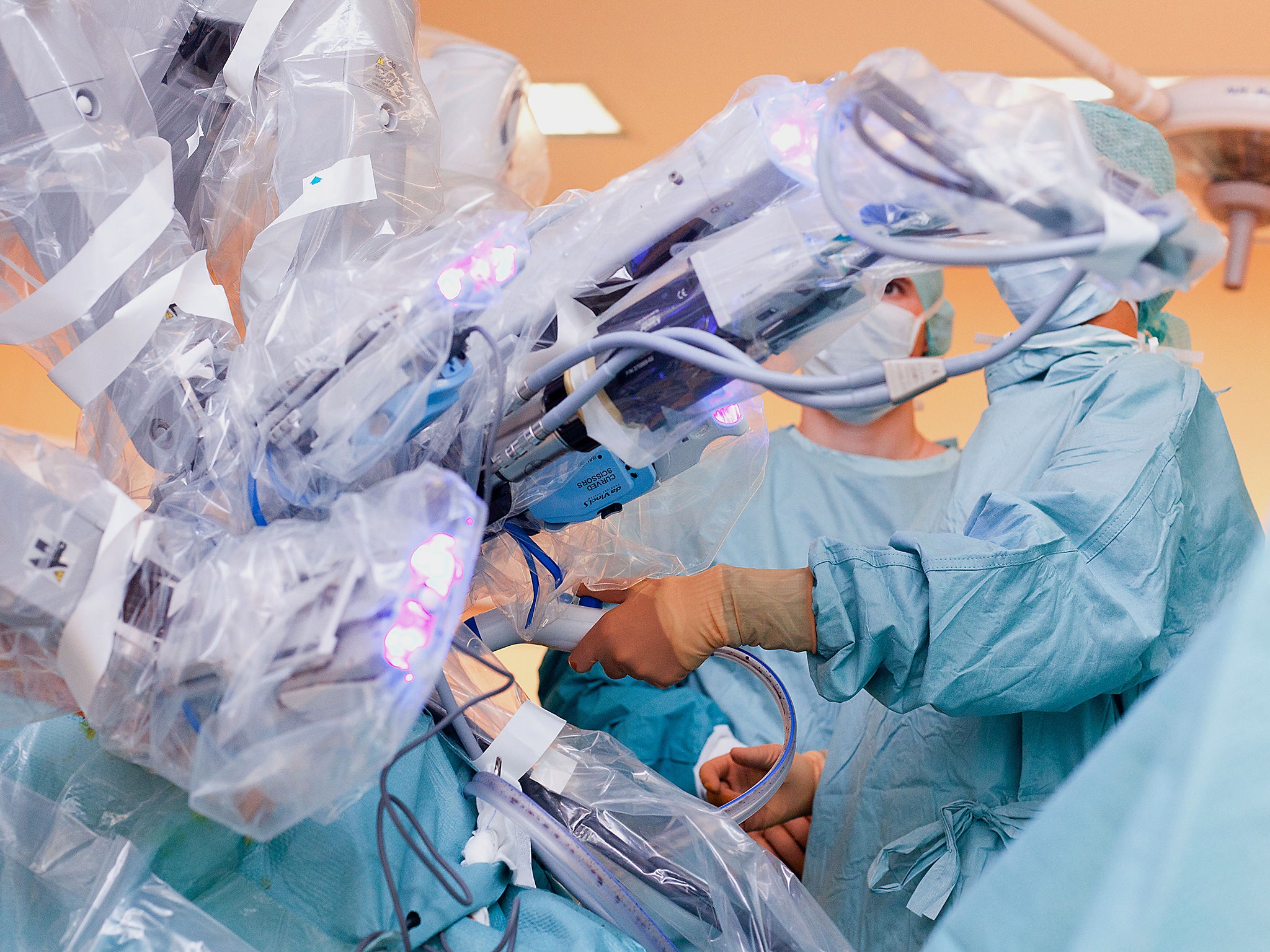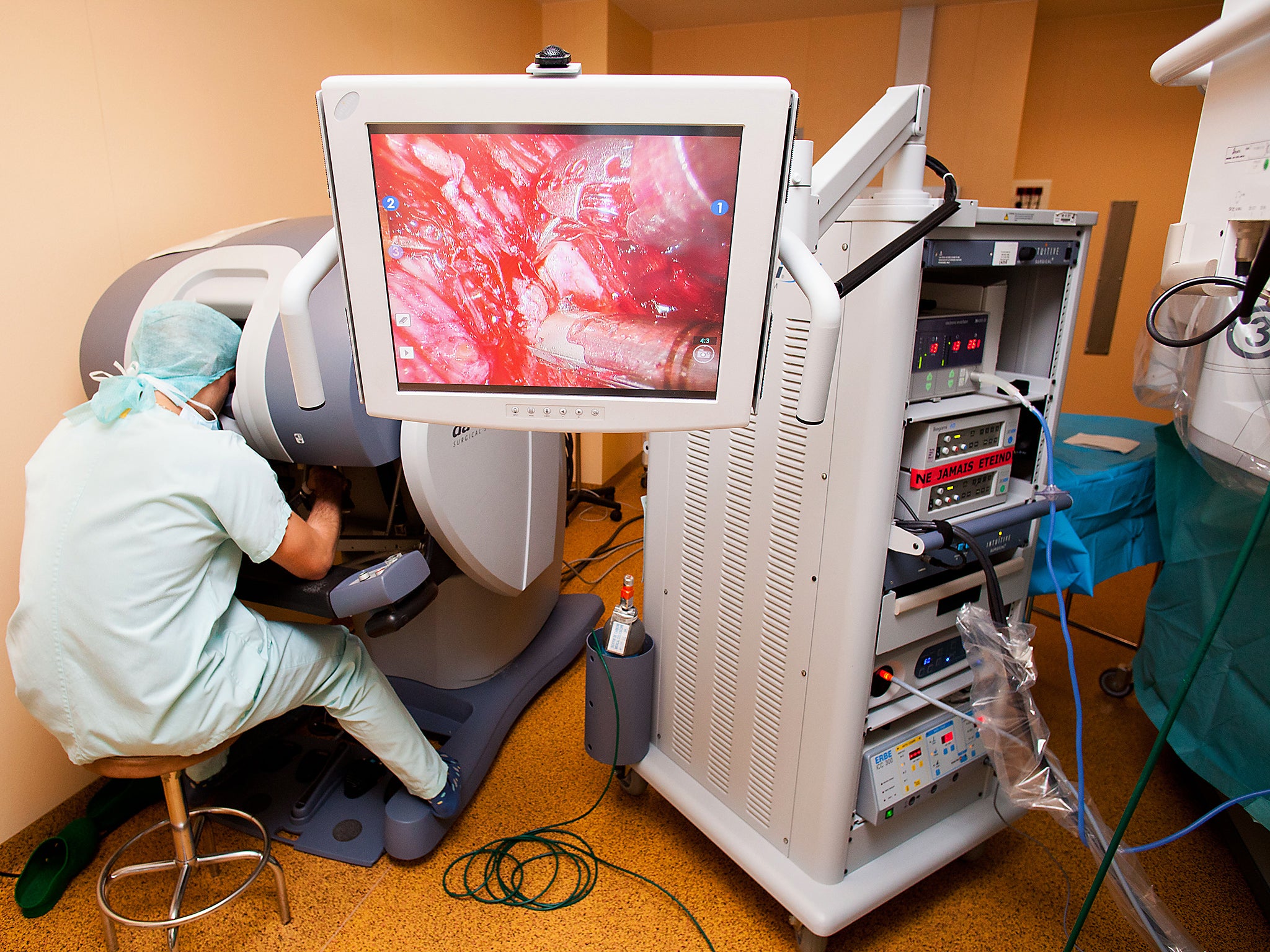The Da Vinci Code: How robots could be the future of surgery
Does the future of surgery rest in non-human hands? Youssef El-Gingihy argues that robots are coming but will still have to wait their turn

I'll never forget the first time that I came across a robot at medical school. I was doing a clinical attachment in urology at Guy's and St Thomas' hospital trust. I watched, gobsmacked, as the consultant urologist performed a prostatectomy (removing the prostate gland) by means of robotic surgery. Remarkably, this was not the only robot at the trust. Guy's pioneered robotic transplant surgery.
The pharmacy even had one for dispensing medication. You could watch the robot in action from behind a screen as its arms collected medicine boxes with remarkable efficiency. We have become accustomed to the idea of robotic technology in various areas from the car industry and manufacturing to medical science. Robotic technology is currently being developed for all manner of health and social care.
This includes endoscopic devices to access hard to reach parts of the body and hand exoskeletons for recovering stroke patients. Nurse animatronic robots have been developed to supervise patients at home in order to ensure that they take medication regularly and are keeping well. Hollywood movies, such as I, Robot have propagated the concept of robots taking over. Full automation could lead to a total transformation of the labour market.
Driverless cars are another exampl,e with Tesla already testing these out. But could highly skilled jobs also be in the line of fire? Could your doctor actually be a robot soon? The answer is probably not just yet - surgeons need not worry about their P45!
The Da Vinci surgical robot was licensed in the US in 2000. According to the website of Intuitive Surgical - the company that makes the Da Vinci robot - it was named after Leonardo Da Vinci because his pioneering work on human anatomy led to the development of the first robot. This was apparently called "Leonardo's robot" and was probably made around 1495 but only rediscovered in the 1950s.

The Da Vinci follows in a long tradition of scientific technologies resulting from military innovation. This includes the internet and GPS both originally developed by the hi-tech military and space sectors and now indispensable components of smartphones.
The Da Vinci was developed by the US Defence Advanced Research Projects Agency (Darpa). It was intended to enable surgery on the front line of the battlefield whilst keeping surgeons out of harm's way. The Da Vinci is designed to assist with laparoscopic or keyhole surgery. It has four arms providing superior manual dexterity and eliminating hand tremors. This alone means that it may extend the career of surgeons as dexterity declines with age. The surgeon normally operates the robot whilst seated at a console in theatre with a screen providing 3D vision. Robotic surgery can also be controlled remotely. The first transoceanic surgery was performed in 2001 by a team of French surgeons in New York on a patient in Strasbourg.
This was dubbed "Operation Lindbergh" in honour of Charles Lindbergh, who was the first man to fly the Atlantic solo. The advantages appear to be obvious. The Da Vinci robot is touted as reducing post-operative complications, including reduced blood loss and the need for transfusions. It is minimally invasive thus reducing pain and therefore hospital stays. Prostatectomy is one of the procedures for which the Da Vinci has been promoted as superior. One of the main complications of the operation is damage to local nerves leading to incontinence and impotence. The precision of robotic surgery should mean that these risks are reduced. However, there are drawbacks.
Operating time is lengthened. The Da Vinci robot is expensive coming in at over $1m (£800,000). Intuitive Surgical remains the only company manufacturing the robot thus meaning that there is little competition to reduce costs. It is also expensive to maintain with parts requiring regular replacement. Nevertheless the savings from reduced hospital stays may well mitigate this.
The Da Vinci is not autonomous. Thus, surgeons require plenty of training potentially needing to carry out in the region of 200 operations in order to be proficient. There also appears to be an insufficient evidence base to evaluate how robot-assisted surgery compares to normal surgery. Put simply, not enough trials have been carried out. There are also plenty of sceptics.
Critics concede that robot assisted laparoscopic surgery reduces hospital stays but emphasise that evidence of superiority is lacking. A 2010 New England Journal of Medicine article devastatingly pointed out that robot assisted laparoscopic surgery simply escalated costs significantly without evidence of improved outcomes. Having spoken to colleagues using robotic surgery, it becomes clear that they are very much enamoured with it.
They agree with the above caveats and point out that it should be used for specific difficult operations, where it provides an advantage, rather than routine or bread and butter procedures. Robot assisted surgery will presumably continue to improve and evolve most likely in the same way as computers.
The current Da Vinci master-slave model is unwieldy and large. Miniaturisation is likely to occur even as the power of the hardware increases. In future, surgeons will use robotic and smart micro devices on demand to assist and augment procedures. Nevertheless, reality does not appear to be keeping up with pop culture memes of robots taking over the world. For now, this dystopian sci-fi vision of tomorrow's world is still on hold.
How to Dismantle the NHS in 10 Easy Steps, published by Zero books – www.zero-books.net/books/how-dismantle-nhs-10-easy-steps
Twitter @ElGingihy
Join our commenting forum
Join thought-provoking conversations, follow other Independent readers and see their replies
Comments